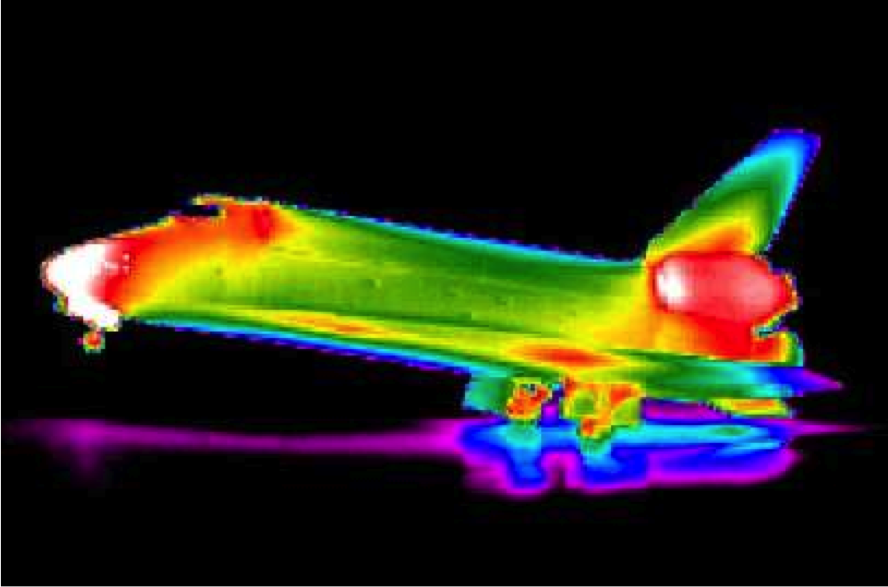 |
 |
 |
 |
Electromagnetic waves (EM radiation) can have any frequency (and corresponding wavelength = c/f) Many cameras can detect frequencies somewhat lower than visible light, into the "IR" (infrared). The images above are in the "far IR", which requires rather special detectors. What do you suppose the bright spot below the left knee is telling you? How about the red band at the leading edge of the shuttle wing? Why is the gecko so much darker than the hand? And, how useful might it be for astronomers to "see through" optically opaque dust?!
- CAPA #13: Due Wed Nov 28, night
- If your iClicker # is 1E96C840, please contact Prof. Pollock
- Next midterm is the week after T-giving break - see the "Exams and Grades" link for more information
CAPA #12:Due Wed Nov 14, night.Written HW #6:Due Friday Nov 16, 2 PM.
*NOTE* On part d, the number given (4000 TW*hrs) is per YEAR, that is the annual United States electrical production.
- There is a weekly optional study session
run by Ariel Paul, every Tues at 8 PM, in G125 (1 floor up from our class).
___________________________________________________________
Earlier homepage and announcements can be found here: week #1, week #2/3 , week 4 , weeks 5/6, week 7, week 8, week 9, week 10,